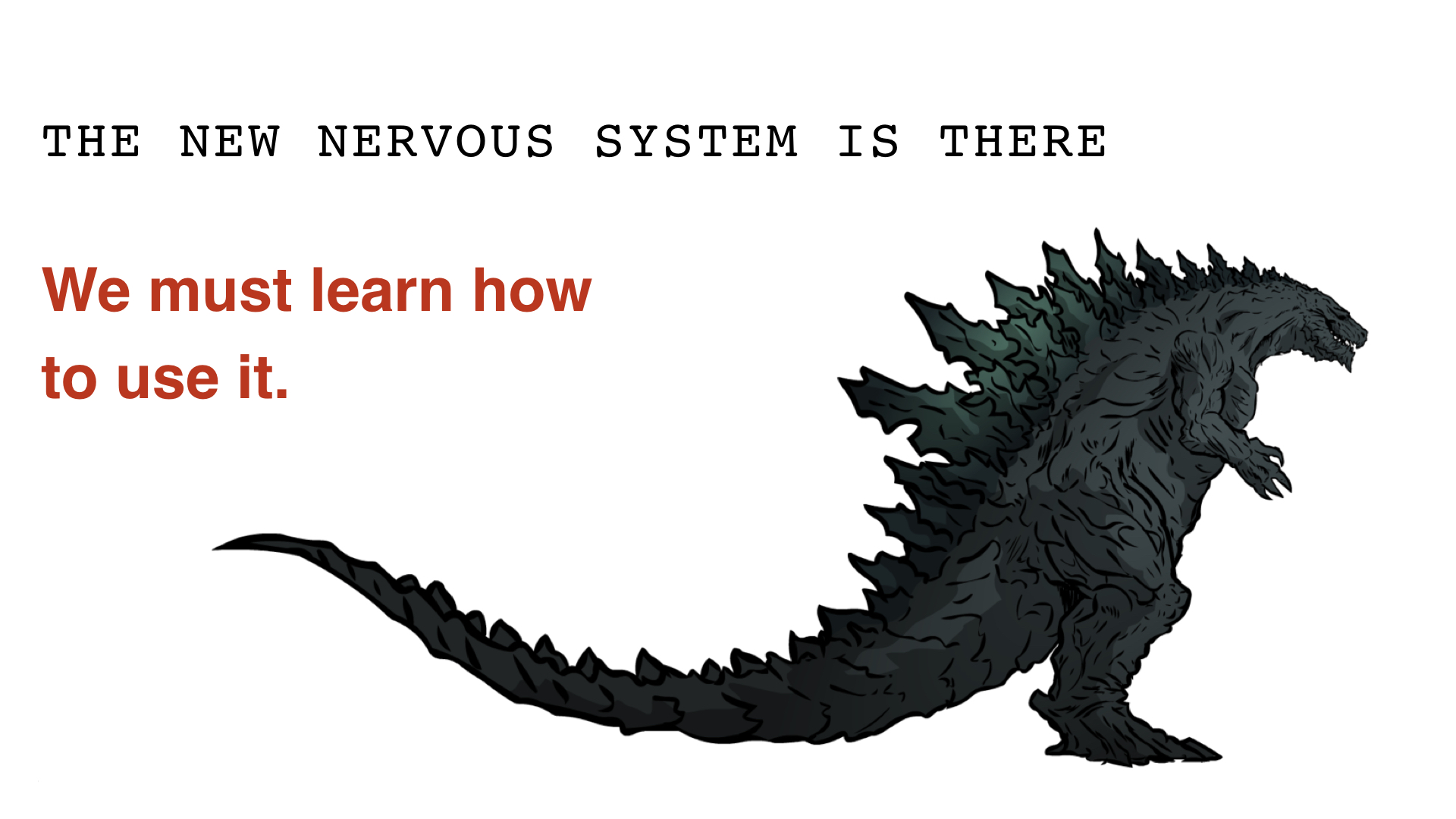Collective mind
Contents
Collective mind
Intuitive description
Short description
Text
Resolved within Holoscope
Text
Reverses within Holotopia
Text
Causes
Text
Unravels
Text
See also
- Bullets
To understand Engelbart’s vision, observe that the printing press is a broadcasting technology. That it enabled only an increase, however large, of the volume and speed of document production. And that otherwise it could only do what the scribes were already doing. When, however, each of us is connected to a digital computer through an interactive interface, and when those computers are linked into a network – we are in effect connected together in a similar way as the cells in an organism are connected by a nervous system.
Imagine if your cells would be using your nervous system to only broadcast data to each other and to your brain – and you’ll have no difficulty understanding why the new technology calls for different thinking!
Has the new technology been augmenting our collective insanity – and not our “collective intelligence” (capability to cope with problems that are at once complex and urgent), as Engelbart envisioned?
To use the new technology to our true advantage, a new division, specialization and organization of knowledge work is needed, which resembles the way in which the cells in a healthy human mind cooperate.
Our civilization is like an organism that has rapidly grown in size, and got out of sync with its environment. This creature has newly developed a nervous system – but has not yet learned how to use it to orient itself in the world, and coordinate its actions.
Knowledge federation emerges from this line of reasoning as our next evolutionary task. And as the principle of operation according to which the knowledge work must self-organize.
See also
- Bullet points
- In five insights you can see the other five insights, and some comments about their relationships.

